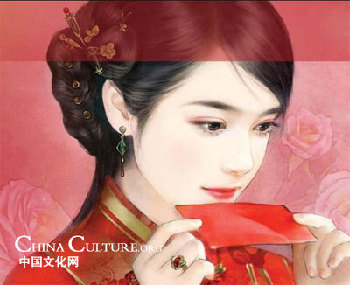Center
Chinese makeup for lips
Updated: 2009-06-18 11:49
By Wen Yi (chinaculture.org)
The shiny image of Zhang Ziyi in the movie the Banquet is impressive to many audiences. Her red and bright lips, short and dark eyebrows, and well decorated cheeks are the typical elements in the makeup popularized during the Tang Dynasty (AD 618—AD907).
In ancient China, especially in the Tang Dynasty, there were seven steps in cosmetic makeup for the belles: powder base, applying color to the face, eye-brow darkening, applying “forehead gold” or “floral twinkle/gold”, painting the dimples, decorating the cheeks and applying lip color.
If eyes are the window to the soul, lips are the mirrors of one’s character and temperament. Being an important part of face decoration as shown above, lip makeup enjoys a long history and has various patterns in different periods.
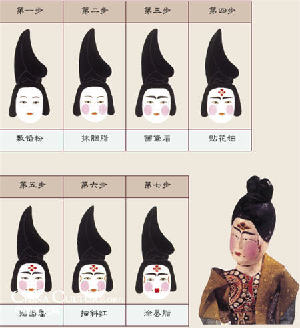 |
|
Seven Steps in Cosmetic Makeup |
The Invention of Makeup for Lips in China
Before the Qin Dynasty (221 BC — 206 BC), the beauty of women’s lips had already been paid special attention to. This was proven when in 1983, a life-size head statue of a goddess was excavated from Niu He Liang Hongshan Culture Site which has a history of over 5000 years, whose lips were red. This shows that the act of reddening lips has already appeared around 5,000 years ago in ancient China.
It is believed that lip makeup was originally practiced to please the gods in religious occasions. As time passed by, people realized that it could liven up one’s spirit and sometimes even could reveal one’s social status. As an consequence, different materials for lip beauty products were constantly tested and used to make the lips red and bright, creating the Chinese art of lip makeup.
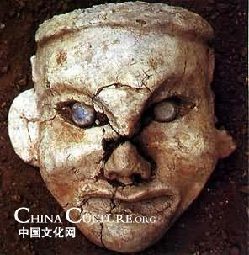 |
|
Head Statue of a Goddess Excavated from Niu He Liang Hongshan Culture Site |
The lip beauty products in ancient China were normally called “lip balm” or “mouth balm”, as recorded by the Chinese dictionary Shiming (or: Explanation of Names) written by Liu Xi in the Eastern Han Dynasty (AD25—AD220).
It should be pointed out that, in its early stage, as with most other types of makeup, lip balm was typically, but not exclusively, worn by women. This paste-like and sticky mixture was applied to relieve chapped or dry lips caused by dry air, cold temperatures or wind. The primary purpose of lip balm is to provide a layer on the lip surface to seal moisture in, protecting them from external exposure.
The Production of Lip Balm
In prehistoric times, the pigments for lip beauty products were generally obtained from plant juices, animal bloods, or minerals.
During historic times, the raw material was vermilion, whose chemical composition is mercuric sulfide (HgS). It was produced in Hunan, Guizhou and Sichuan Province and bears the perfect color for ideal lips. However, lacking strong adhesion, vermilion is easily dissolved on warm lips so its shiny red could not last long. Therefore, later on, the ancient people added mineral wax and animal fat, making vermilion water-proof with strong adhesive force.
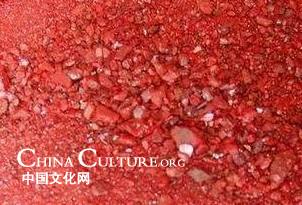 |
|
Vermilion |
Besides vermilion, some ancient Chinese used rouge—the red facial balm (named “Yan Zhi” in Chinese) to do lip makeup.
Specials

President Hu visits the US
President Hu Jintao is on a state visit to the US from Jan 18 to 21.
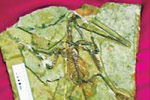
Ancient life
The discovery of the fossile of a female pterosaur nicknamed as Mrs T and her un-laid egg are shedding new light on ancient mysteries.
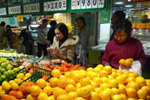
Economic Figures
China's GDP growth jumped 10.3 percent year-on-year in 2010, boosted by a faster-than-expected 9.8 percent expansion in the fourth quarter.
